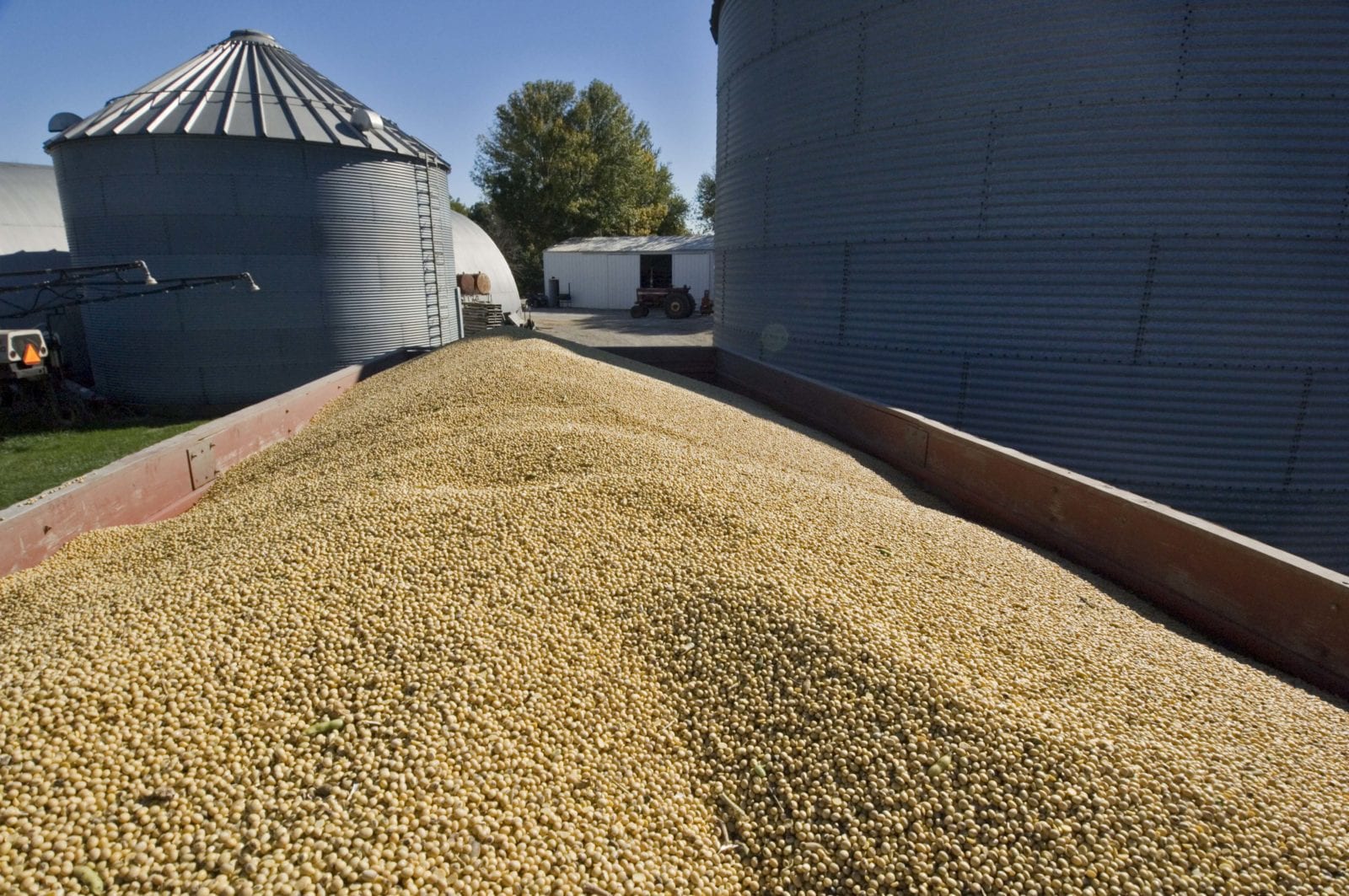USDA Analysts Forecast Record 2022 U.S. Soy Crop; Global Supplies Revised Upward
- Category:
- General News
- Market Information

Despite a wet spring for much of the Midwest, U.S. Department of Agriculture analysts project a record U.S. Soy crop in its August 2022 World Agricultural Supply & Demand Estimates report — a benefit to international buyers of U.S. Soy.
If realized, the forecasted crop size of 4.53 billion bushels (123.3 MMT) means good supplies of U.S. Soy available for people all around the world — sustainably produced, high quality, reliable delivery of U.S. Soy, says Jim Sutter, CEO of the U.S. Soybean Export Council
Regardless of where you sit in the value chain, Sutter encourages businesses to look at how they can best mitigate risk.
“Think about what your customers and consumers want,” he says. “There are still plenty of things going on in the world that could interrupt the supply and demand picture: Russia’s war on Ukraine, the continuation of COVID, consumer inflation in many places around the world and some supply chain disruptions.
“Be diligent and continue planning, and while things are improving, we still have plenty to work on.”
Joining Sutter on screen was Mac Marshall, USSEC and United Soybean Board Vice President of Market Intelligence; Emily French, Founder of Global Ag Protein; and Brent Babb, USSEC Regional Director for Europe and Middle East & North Africa.
Marshall says USDA’s August WASDE is always exciting, since it’s typically the yield update based on crop development. Additionally, the trade was looking for updates to planted area as USDA re-surveyed Minnesota, North Dakota, and South Dakota due to wet weather throughout planting season.
From this, USDA revised total planted area down by 300,000 acres to 88.025 million acres (35.6 million hectares) and its yield projection up to 51.9 bushels per acre.
“The upward revision to yield more than offsets the acreage reduction, putting the total estimated crop size at 4.53 billion bushels (123.3 MMT),” Marshall says, adding that if realized, this would surpass last year’s record crop.
A Changing Demand Story
For the marketing year 2021/22, USDA decreased its export forecast slightly as the season draws to a close. This 10-million-bushel reduction translates to additional carry-in of 10 million bushels to the 2022/23 marketing year, which begins Sept. 1.
With a robust order book for the 2022/23 crop, USDA took up its new crop export forecast by 20 million bushels to 2.155 billion bushels (58.7 MMT).
Factoring in the increased carry-in and higher forecast production and the increased export outlook, projected ending stocks for the 2022/23 marketing year were taken up by 15 million bushels to 245 million bushels (6.7 MMT).
Rounding out the notable domestic balance sheet changes, soybean prices were revised down by 5 cents a bushel to $14.35.
However, market analyst Emily French cautions that the global demand picture is less optimistic for those at the farmgate.
"Commodities are always cyclical," French says, adding that you can't get lost from that.
Not surprised by USDA’s upward yield adjustment, French points out that the past two years USDA has understated the U.S. Soy crop.
When you look at USDA and what they’re discussing, French says recessionary concerns are alive and inflation is kind of dancing in the background a little bit. “Recession” is the word now, she says, and the market is also in transition as we move from 2021/22 to 2022/23.
What French finds most peculiar in USDA’s August WASDE report is the U.S. corn feed demand projections and feed wheat demand projections.
“Without China, USDA actually forecasts a contraction for both segments,” French notes. “However, it is almost religiously attached to this idea of protein meal demand expanding. The rest of the world is at 3.8 million tons and then China, has a massive recovery dialed in, versus this current year.”
French says as the trade looks at the current year (2021/22), we need to step back and understand China’s position.
“That is the decline in crush of 6 million tons year-on-year, which is greater than both the trade war and African Swine Fever. That 6-million-ton decline supersedes the 5-million-ton decline in the 2019-2020 period,” she emphasized.
French is concerned about demand coming from China, whether it is soybeans, corn, wheat, sorghum, barley or even rice.
“We have to acknowledge China’s crush marketing year to-date is down just over 8%. USDA is using 6.4% decline; yes, there are 24 days left but China has some problems. It’s at sub-50% capacity.
“If you are replacing crush every week at 1.7 million tons, which is about what they’ve been doing for the past two or three months, in a negative hedge crush environment, they should be buying 24-26 vessels per week. That’s not what is happening. They have a much bigger new crop export book this year, which is about 4.1 million tons larger now – that is the entire gain for the U.S. new crop book now.”
To dive into this discussion even more and watch the video below.
On Monday, Aug. 15, the market responded as soybeans fell sharply, partially due to China’s central bank cutting interest rates in the face of tepid economic data. This is just more fuel to the fire for recession concerns, adds Marshall.
This article is partially funded by U.S. Soy farmers, their checkoff and the soy value chain.